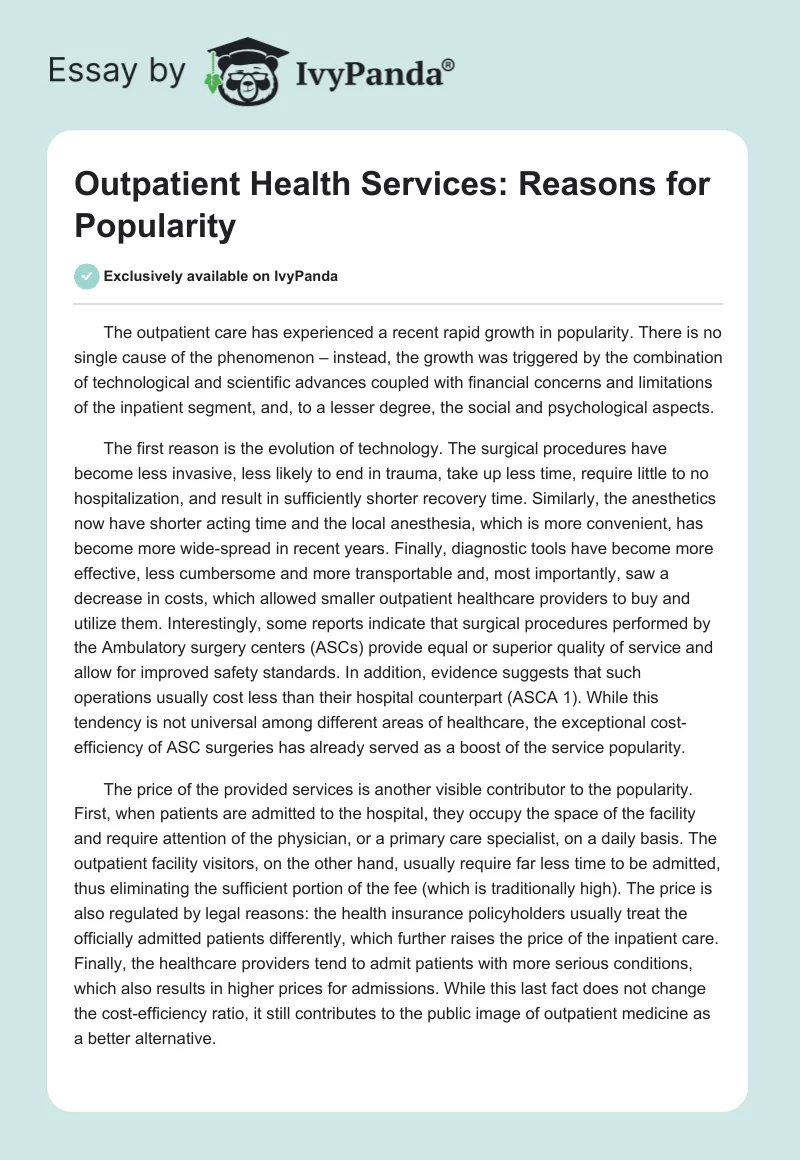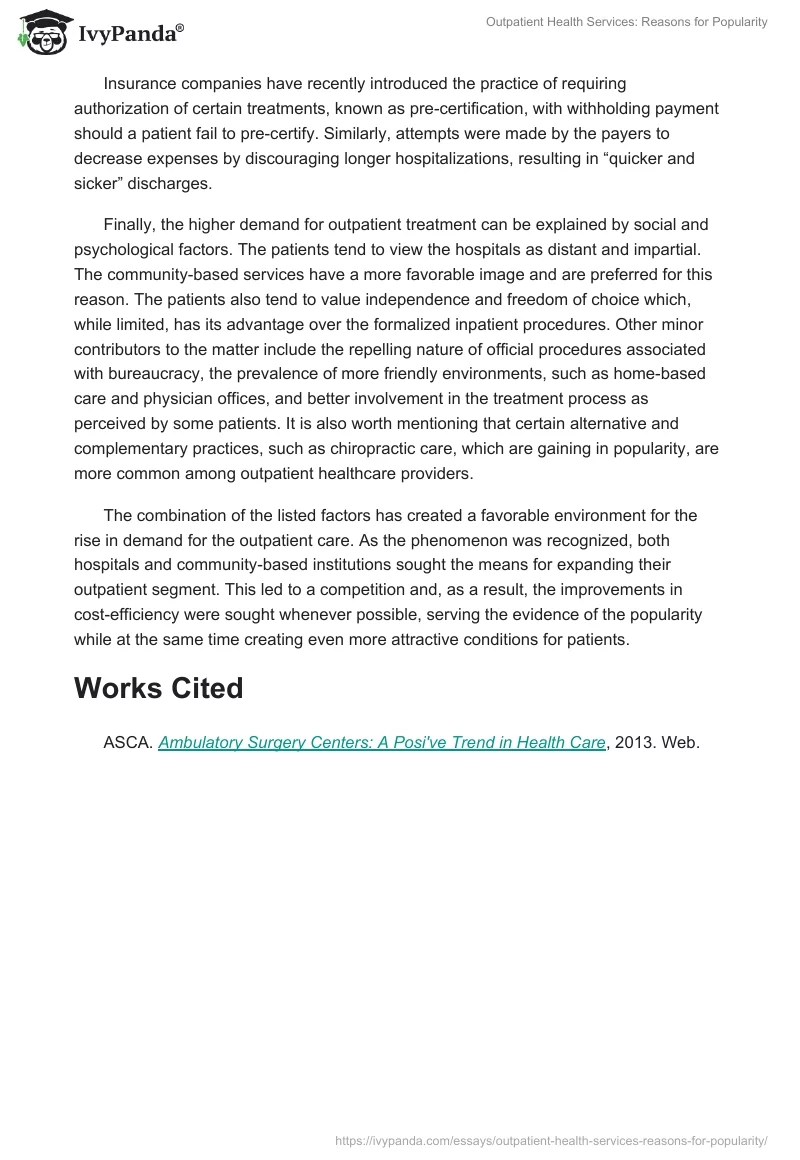The outpatient care has experienced a recent rapid growth in popularity. There is no single cause of the phenomenon – instead, the growth was triggered by the combination of technological and scientific advances coupled with financial concerns and limitations of the inpatient segment, and, to a lesser degree, the social and psychological aspects.
The first reason is the evolution of technology. The surgical procedures have become less invasive, less likely to end in trauma, take up less time, require little to no hospitalization, and result in sufficiently shorter recovery time. Similarly, the anesthetics now have shorter acting time and the local anesthesia, which is more convenient, has become more wide-spread in recent years. Finally, diagnostic tools have become more effective, less cumbersome and more transportable and, most importantly, saw a decrease in costs, which allowed smaller outpatient healthcare providers to buy and utilize them. Interestingly, some reports indicate that surgical procedures performed by the Ambulatory surgery centers (ASCs) provide equal or superior quality of service and allow for improved safety standards. In addition, evidence suggests that such operations usually cost less than their hospital counterpart (ASCA 1). While this tendency is not universal among different areas of healthcare, the exceptional cost-efficiency of ASC surgeries has already served as a boost of the service popularity.
The price of the provided services is another visible contributor to the popularity. First, when patients are admitted to the hospital, they occupy the space of the facility and require attention of the physician, or a primary care specialist, on a daily basis. The outpatient facility visitors, on the other hand, usually require far less time to be admitted, thus eliminating the sufficient portion of the fee (which is traditionally high). The price is also regulated by legal reasons: the health insurance policyholders usually treat the officially admitted patients differently, which further raises the price of the inpatient care. Finally, the healthcare providers tend to admit patients with more serious conditions, which also results in higher prices for admissions. While this last fact does not change the cost-efficiency ratio, it still contributes to the public image of outpatient medicine as a better alternative.
Insurance companies have recently introduced the practice of requiring authorization of certain treatments, known as pre-certification, with withholding payment should a patient fail to pre-certify. Similarly, attempts were made by the payers to decrease expenses by discouraging longer hospitalizations, resulting in “quicker and sicker” discharges.
Finally, the higher demand for outpatient treatment can be explained by social and psychological factors. The patients tend to view the hospitals as distant and impartial. The community-based services have a more favorable image and are preferred for this reason. The patients also tend to value independence and freedom of choice which, while limited, has its advantage over the formalized inpatient procedures. Other minor contributors to the matter include the repelling nature of official procedures associated with bureaucracy, the prevalence of more friendly environments, such as home-based care and physician offices, and better involvement in the treatment process as perceived by some patients. It is also worth mentioning that certain alternative and complementary practices, such as chiropractic care, which are gaining in popularity, are more common among outpatient healthcare providers.
The combination of the listed factors has created a favorable environment for the rise in demand for the outpatient care. As the phenomenon was recognized, both hospitals and community-based institutions sought the means for expanding their outpatient segment. This led to a competition and, as a result, the improvements in cost-efficiency were sought whenever possible, serving the evidence of the popularity while at the same time creating even more attractive conditions for patients.
Works Cited
ASCA. Ambulatory Surgery Centers: A Posi’ve Trend in Health Care, 2013. Web.


